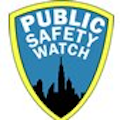I stumbled across an interesting research paper today titled "The Closed City: Downtown Security Zones and the Loss of Public Space." The paper apparently was published as part of City Futures 2009, "an international conference on globalism and urban change." The author was Jeremy Nemeth, Ph.D., with University of Colorado Denver, and Nemeth takes an in-depth look at how urban U.S. cities have established security buffers around key public landmarks and in financial districts.
Nemeth takes a close look at how perimeter security measures have been employed to deny public access to these areas via fencing, bollards, or even simply designating areas as not for public use. The reasoning, as we know in the security industry, is that security managers are creating a buffer of safety around the buildings, with the thought that by pushing the perimeter further away from the building or notable landmark, you can create a moat of inactivity that makes it easier to patrol, monitor and thus secure the building from any action like rioting or even a bombing.
What I liked about Nemeth's paper is that he studied the development and expansion of these non-public secure zones in cities and he examines not only the reasons behind them, but the cultural and sociological impact they can have. The paper covers a lot of territory (from the role of the security consultant in modern architectural design, to why urban areas need centralized public space for gatherings and free exchange of ideas, to how DHS' Urban Areas Security Initiative has affected the closure of formerly public areas), and also examines the difference between "limited" and "closed public spaces.
I won't spoil the plot (you can do that yourself by reading Nemeth's abstract at the beginning of the paper), but I will close in saying that his 19-page report is a good read for law enforcement executives, architects, security consultants, and security directors responsible for properties in urban city centers.
- Geoff Kohl, editor, SecurityInfoWatch.com, writing for PublicSafetyWatch
About the Author
